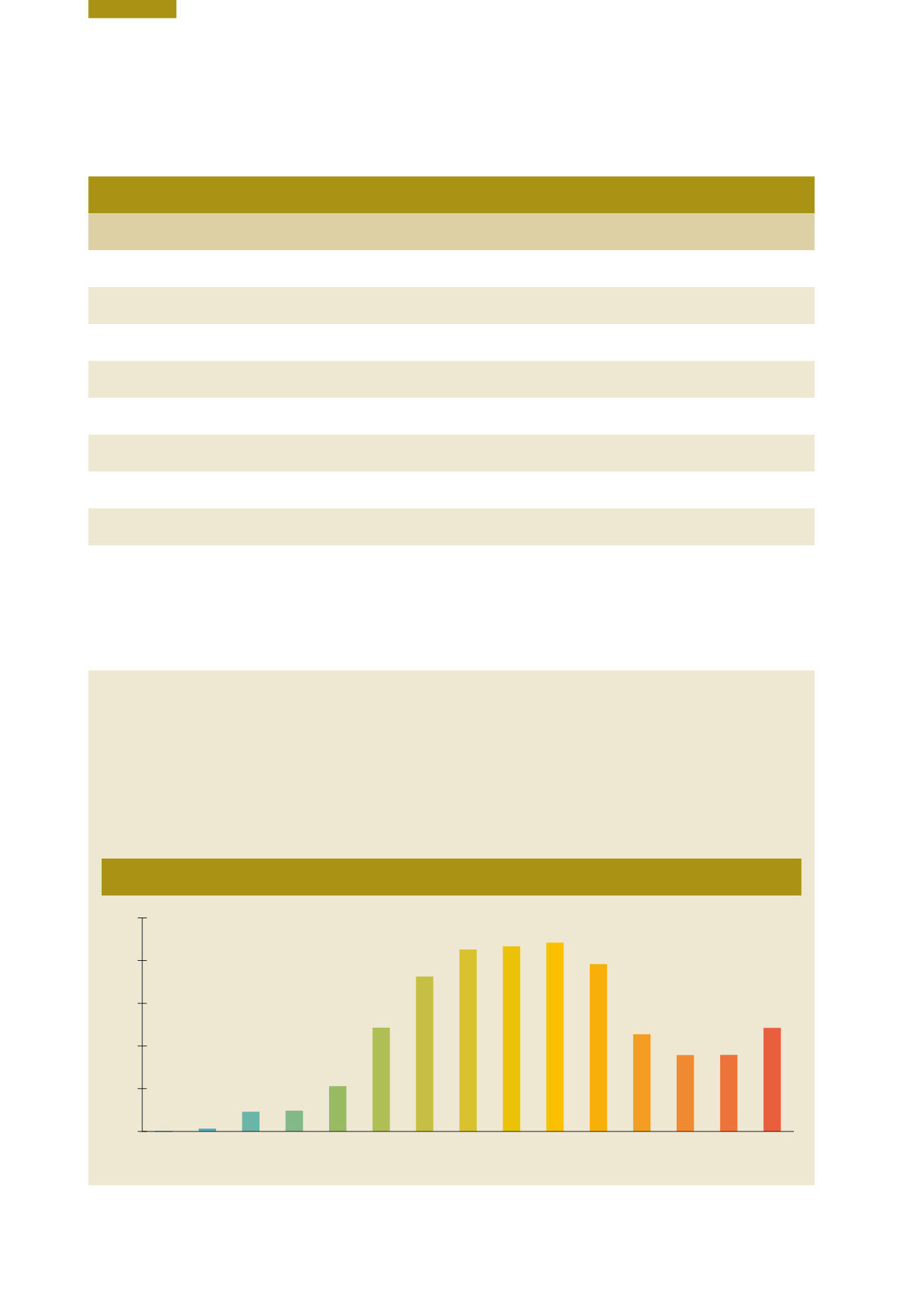

Ireland’s Environment – An Assessment 2016
178
Significant improvements to the energy efficiency of housing have been evident since 2000 as a result of improved
building regulations (e.g. the Building Energy Rating scheme – see topic box “Building Energy Rating” and Figure 11.4).
Building Energy Rating – Opportunities for Energy Efficiency and Cost Savings
for Householders
The Building Energy Rating (BER) is a home energy rating from A to G. It is based on energy performance and CO
2
emissions. A-rated homes are the most efficient and will have the lowest energy use and costs.
Figure 11.4 shows the distribution of BER-certified homes in 2014. It can be noted that 50% of houses tested were
rated D or lower. This represents both a considerable ongoing cost for these households and significant opportunity
to improve energy efficiency.
Table 11.1
Residential Energy Use in Ireland (Source: SEAI)
Residential energy use (GWh)
1990
2010
2014
Coal
7,277
2,957
2,546
Peat
8,430
2,948
2,325
Oil
4,528
14,690
9,967
Gas
1,364
8,253
6,229
Electricity
4,142
8,546
7,704
Renewables
520
631
754
Fossil fuels (total)*
21,598
28,848
21,068
Total
26,260
38,024
29,526
*Fossil fuel (total) is the sum of coal, peat, oil and gas use, while the final Total column also includes electricity and renewables use.
Figure 11.4
Distribution of BER-certified Homes in 2014 (Source: SEAI BER data)
0%
3%
6%
9%
12%
15%
G
F
E2
E1
D2
D1
C3
C2
C1
B3
B2
B1
A3
A2
A1
Building Energy Rating


















